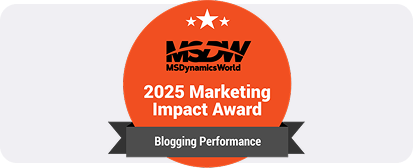What is (Enterprise Resource Planning) ERP? | Brief Guide
Think about operating a business where all the operations, like sales, inventory, finance, and manufacturing, are connected.
Achieving this sounds great, as it means never missing orders, avoiding extra entries, and always having fresh data. Enterprise resource planning (ERP) exists for every reason mentioned above. If you are eager to understand what is ERP? And how it benefits your business, this article is for you.
Today, firms that need to effectively operate in many branches or departments are reliant on ERP solutions. You may also refer to it as an ERP system or ERP software as a service (SaaS) or ERP in the cloud. All these phrases describe a technology that helps you streamline your daily tasks by having all your core business activities linked on one platform.
Once you know about ERP, its background, key benefits, and how it works, you will understand why Toronto businesses choose cloud ERP from Microsoft. So, without further ado, let’s begin the article.
What is ERP?
ERP is used to assist businesses in coordinating their main activities. Every department, such as accounting, supply chain, manufacturing, sales, and customer service, brings in its updates in real time to the ERP system.
By using one source, no one needs to work with incorrect data, repetitive tasks are not performed, and everyone’s efficiency can increase. In short, it simplifies your business operations by displaying all your company’s activities in one place.
A Little History of ERP
ERP systems have been in use for many years, and their background is quite interesting. We will go through an overview of what happens during each main phase of ERP development.
- 1960s – Material Requirements Planning (MRP)
By the 1960s, companies faced the challenge in their inventory management system and schedules. As a result, MRP was created. MRP can be seen as a specialized list for factories, instructing them on what materials to purchase and when. Most of its focus was on managing manufacturing and inventory.
- 1970s – Evolution of MRP
In the 1970s, improvements were made to MRP systems. Better methods for production planning, inventory tracking and handling resources were introduced. At this point, computers gave businesses the ability to manage their work more efficiently.
- 1980s – Manufacturing Resource Planning (MRP II)
During the 1980s, the name of MRP was changed to MRP II. At this point, the company created finance, human resources, and other departments. Just imagine a simple management software had turned into an advanced version that manages everything in the factory and increased productivity. Moreover, with MRP II, businesses could collaborate better.
- 1990s – Emergence of ERP
During the 1990s, the industry adopted ERP. It combined the departments of sales, finance, manufacturing, and HR into a single system. Therefore, companies could continue tracking their activities, making it easier for them to make decisions fast.
- 2000s – ERP II and Cloud ERP
In the 2000s, ERP was renamed ERP II and given the ability to take advantage of the internet. Because of this, businesses could handle their ERP systems remotely, which is how cloud ERP was developed. Cloud technology allows companies to be more flexible and cut expenses.
- 2010s to Present – Intelligent ERP (iERP)
At present, iERP is helping make ERP systems smarter. iERP uses AI and machine learning to forecast new trends, automate everyday work, and supply users with more details. As a result of this, businesses are able to respond swiftly to any changes in the market.
Fundamentals of ERP
To see the value of ERP for your business, you must first understand the basics.
It includes:
Integrate Business Functions
All main areas of a business such as finance, human resources, supply chain, and customer management are combined into one ERP system. By combining functions, communication improves, and errors are minimized.
Create a Single Source of Truth
Thanks to ERP, operations are not fragmented, as all information is kept in a central database. With a reliable single source, people across the company have the latest information, which aids their decision-making.
Automate Tasks and Improve Efficiency
You can use ERP to automate data entry, processing of orders, and even payroll management. With automation, the workload is reduced, errors are prevented, and employees can focus on other significant responsibilities.
Deliver Real-Time Insights and Reporting
Reports and analytics are always available to users with ERP systems. Organizations can keep an eye on their success all the time, address problems faster, and respond to them promptly, all of which are necessary to remain competitive today.
Adopt Cloud-Based ERP and AI Capabilities
Nowadays, ERP systems are mostly on the cloud, allowing better flexibility and making the upfront costs lower. Using AI also helps streamline difficult jobs, make predictions, and improve business operations.
Note: ERP systems help businesses by bringing different processes together. This allows companies to work productively, choose the best options, and respond fast to changes. Before changing and growing, Canadian businesses must learn and understand these fundamental principles.
Now, it’s time to explore ERP modules.
Enterprise Resource Planning (ERP) Modules
Every module in an ERP system is designed for a different area of running the business.
Common modules include:
Financial Management
This module handles everything to do with money. It includes all the procedures for setting a budget, managing accounting, recording ledgers, and reporting finances. It allows a business to track its income and all its expenditures.
Supply Chain Management
This part controls the movement of goods from purchasing what is needed to holding it and delivering the final product. It ensures no delays in the schedule.
Manufacturing Management
Manufacturing ERP provides support for planning manufacturing, managing factory operations, and ensuring high quality. It helps manufacturers to organize their work and perform it efficiently.
Warehouse Management System (WMS)
It lists where items are located, their movement routes, and when more items are required. In addition, Warehouse Management System helps manage large storage areas.
Customer Relationship Management (CRM)
CRM System works with sales, marketing, and customer support. It allows a business to understand its customers and respond to their needs.
Human Resources (HR)
It helps manage employee details, disburse salaries, recruit workers, onboard them, and more. With this, tasks such as maintaining records become more efficient and organized.
E-commerce
Companies can now sell their products or services online easily with the integration of sales channels.
Procurement Management
ERP Procurement module is responsible for finding the needed supplies and services and identifying the best options and prices available.
Data Analytics
It gathers and analyses data to allow firms to respond faster to business challenges.
Marketing Automation
This module automates marketing tasks like emailing and advertising, saving time and reaching more customers.
Project Management
It supports completing projects on time and without exceeding the budget.
Note: You can customize and combine these ERP modules to suit your industry, whether it’s manufacturing, retail, or another sector.
Features & Benefits of ERP
ERP is not just about software; it’s about transforming how your business operates.
Some key features include:
- Unified Data: All departments access consistent, real-time data.
- Automation: Reduces manual entry, decreasing errors.
- Customization: Can be tailored to your specific business needs.
- Accessibility: With ERP cloud services, your team can use the system remotely.
- Scalability: If your business gets larger, ERP will grow with you.
The benefits of implementing an ERP system are substantial:
- Increased Productivity: Your employees have more time for essential strategies since tasks are automated.
- Improved Decision-Making: Managers are able to make the right decisions because they receive timely information from the data.
- Cost Savings: Minimize waste and reduce costs by implementing easy and fast procedures.
- Customer Satisfaction: ERP improves customer service by enabling faster and more accurate responses.
- Regulatory Compliance: Supports the company’s compliance with all necessary regulations and standards.
Why Microsoft Dynamics 365 Cloud ERP Matters?
As we know, Business Central is an all-in-one platform that combines ERP and CRM. Using Microsoft Dynamics 365 helps Canadian businesses, in Toronto and Canada, be flexible, scale up or down, and save on costs. Since your cloud ERP is online, you pay less upfront and have the freedom to use it from any place and at any time.
Small and medium-sized companies can take advantage of Microsoft Dynamics 365 Business Central, as it has modules such as Finance and Operations. They play a role in helping companies in manufacturing, distribution, retail, and services enhance the efficiency of their ERP.
ERP Implementation and Support
ERP implementation requires a well-thought-out plan and experienced support.
It involves:
- selecting the right ERP system
- customizing it to fit your needs
- training your staff
- ensuring a smooth transition
Getting proper ERP implementation and support is vital to prevent hazards and fully enjoy all advantages of ERP. Most of the time, companies rely on ERP support services right after go-live to take care of upgrades and manage issues that might arise.
Choosing Dynamics Square—an experienced Dynamics 365 implementation partner, makes it easier to implement Microsoft ERP, enhance overall ERP support, and drive continuous improvements in your business. Whether you're based in Vancouver or Toronto, professional ERP support services can simplify the entire process.
Knowing what ERP is and choosing the right system can help you transform your business. If you choose Microsoft Dynamics 365 for manufacturing, supply chain management, or accounting, you can expect a positive impact on your business. Allow our team to explain how we can employ our expertise to customize a cloud ERP for your organization’s needs and enhance your success.
Call us at +1 778 381 5388 or email us at info@dynamicssquare.ca and let Dynamics Square simplify your ERP journey today.
People Also Ask:
What is ERP in simple terms?
ERP is a cloud-based solution that provides services for many departments in a business. Finance, manufacturing, supply chain, sales, customer service, and several other operations are part of it.
What is an ERP vs CRM?
ERP vs CRM, They are two different types of software systems used in business. At their core, ERP mainly manages the organization’s internal workflows, while taking care of customer and prospect relations is the responsibility of CRM.
What are the 5 components of ERP?
Here are the 5 components of ERP:
- Finance
- Supply Chain Management
- Project Management
- E-commerce
- Human Resources
What is an example of an ERP?
Microsoft Dynamics 365 is an example of an ERP that comes with various features and functions because it integrates with other Microsoft products.
What are ERP services?
The services include all assistance and support necessary for implementing, customizing, and using ERP systems. With these services, businesses combine crucial business tasks into one system, making processes more efficient, easier to organize, and better suited for decision-making.
What does ERP stand for in customer service?
ERP customer service means everything about the customer, such as what they bought, what they like, and past conversations, is stored in one place and accessible to service representatives.
What is ERP support?
ERP support refers to the maintenance, assistance, and guidance provided to organizations using ERP software systems.
What is the role of ERP support?
ERP support ensures that the ERP works properly, manages user issues, and helps streamline their operations within the organization.


